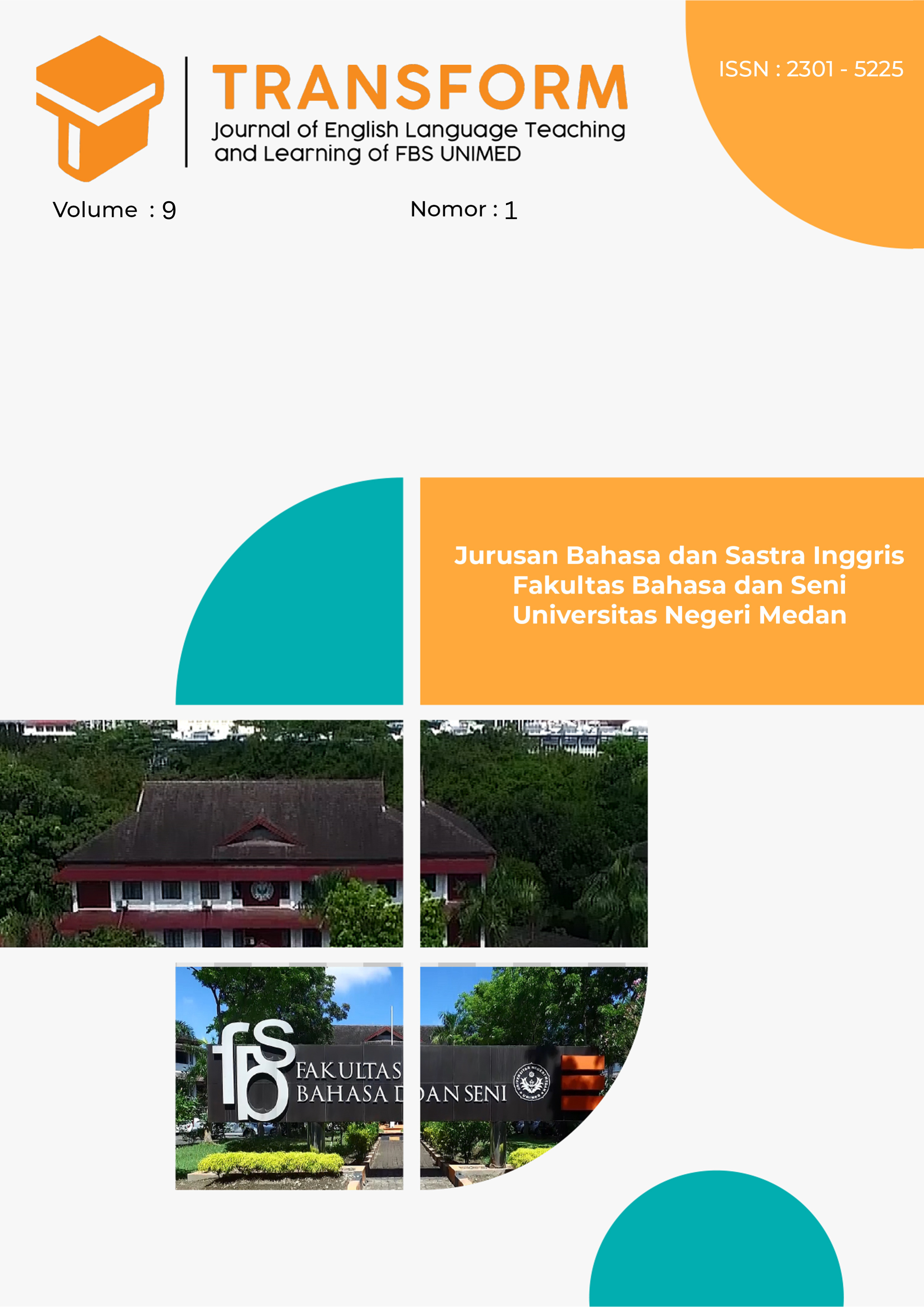IDEOLOGY OG MYTH IN JAVANESE TRADITION TINGKEBAN
DOI:
https://doi.org/10.24114/tj.v9i1.24428Abstract
This research is aimed to analyze the ideology of myth in the equipments used in tingkeban ceremony by using the theory from Martin. The data of this research are taken from the Javanese Tingkeban ceremony presented in Desa Sei Buluh. This study is focused in the process and equipments used in tingkeban ceremony and then analyzing the myth with the meaning of each equipment. The writer conclude if there are 12 equipments which contain of myths and two rituals. Every equipment has its myth that have same purpose that is to throw away dangers of the children and the prospective mother. The ideology of myth in each procession and equipments related to the animism and dynamism belief system that roh (spirit) can benefit human life, as well as can asked for help for human life in this world, and belief that every object, plant or animal has magical powers that can disturb or protect humans. This research is related to the academic study of symbolism as guidance to live a new life in Javanese culture. That tingkeban ceremony is using a variety of tools and devices that are symbolized by jarwa dhosok which is a term in the traditional Javanese society. Tools and equipment are believed to mean more than just an object by its adherents.Downloads
Published
31-01-2020
How to Cite
Handayani, S., & Andayani, W. (2020). IDEOLOGY OG MYTH IN JAVANESE TRADITION TINGKEBAN. TRANSFORM: Journal of English Language Teaching and Learning, 9(1). https://doi.org/10.24114/tj.v9i1.24428
Issue
Section
Articles
License
Copyright (c) 2020 Selvia Handayani, Widya Andayani

This work is licensed under a Creative Commons Attribution-ShareAlike 4.0 International License.
Authors who publish with this journal agree with the following terms:
- Authors retain copyright and grant the journal right of first publication with the work simultaneously licensed under a Creative Commons Attribution License that allows others to share the work with an acknowledgment of the work's authorship and initial publication in this journal.
- Authors are able to enter into separate, additional contractual arrangements for the non-exclusive distribution of the journal's published version of the work (e.g., post it to an institutional repository or publish it in a book), with an acknowledgment of its initial publication in this journal.
- Authors are permitted and encouraged to post their work online (e.g., in institutional repositories or on their website) prior to and during the submission process, as it can lead to productive exchanges, as well as earlier and greater citation of published work (See The Effect of Open Access).
- This work is licensed under a Creative Commons Attribution-ShareAlike 4.0 International License.








